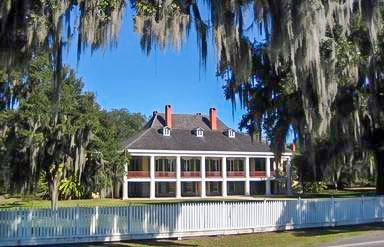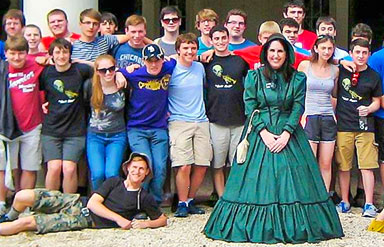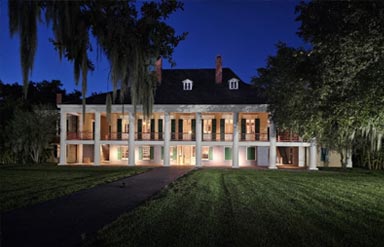Choose from one of our exclusive tours to experience the best of Destrehan plantation:
For Spanish and French Tours, please contact Daniel Castoriano at (337)244-5867 or email him at daniel@destrehanplantation.org
-
 Plantation Tours
Plantation Tours
-
 Combo Tours
Combo Tours
-
 Group Tours
Group Tours
-
 Haunted Plantation Tour by Nola Ghost Riders (Nightly)
Haunted Plantation Tour by Nola Ghost Riders (Nightly)
-
 Exhibits (Explore the history)
Exhibits (Explore the history)
Welcome to Destrehan Plantation, where history unfolds in fascinating detail. Here you’ll be introduced by name–not just to the people whose portraits hang in this historic home–but to many of the enslaved men and women who built this plantation and made it thrive. Come meet them. Hear their stories. Then go home and share what you’ve learned.
Downloadable audio tours available are on site in French, Spanish, German, and English with the purchase of a Life at Destrehan Plantation tour ticket.
Destrehan Plantation is located only 10 minutes from the Louis Armstrong New Orleans International Airport. For your convenience, we offer free on-site parking and luggage storage while you take your tour.
Our Historic Site Offers:
- History-rich guided tours
- Beautiful scenery
- A relaxing atmosphere
- Picnic areas
- A Heritage Education Program for students
- A gift shop with hand-made items by local artists and craft artisans
- The Indigo Cafe-serving sandwiches, salads, pastries, coffee and Blue Bell ice cream.
- Senior citizens, military, children, and large group discounts
- Our gift shop, the main house, and the Miller-Haydel Museum are handicap accessible
Tours Include:
- A guided tour of the plantation home and the enslaved cabin by a historical interpreter
- Access to The Jefferson Room – featuring an authentic document signed by Thomas Jefferson and James Madison
- Access to The Herbert J Harvey, Jr. Legacy Room – featuring original artifacts and documents from the family members
- Access to the 1811 German Coast Uprising, a Slave Revolt Exhibit and Rost Home Colony, a Freeman Colony exhibit, both located in the Miller-Haydel Museum.
- Also visit the Louisiana Farm Barn, a Sugar and Textile Museum.
- Self-guided tour of the grounds and dependency buildings
- A daily historical demonstration
 
Uber and Lyft provide transportation to and from the plantation! |
|
Before you come, please note the following:
|
Donate to the River Road Historical Society
Since 1968, the River Road Historical Society has supported historic preservation of buildings along the River Road in Louisiana and utilized the Destrehan Plantation site as a unique learning environment. As we celebrate our 50th Anniversary and beyond, we continue our mission through more exhibits, educational programs and special events for the public. We invite you to be a part of this endeavor by donating to this cause.




